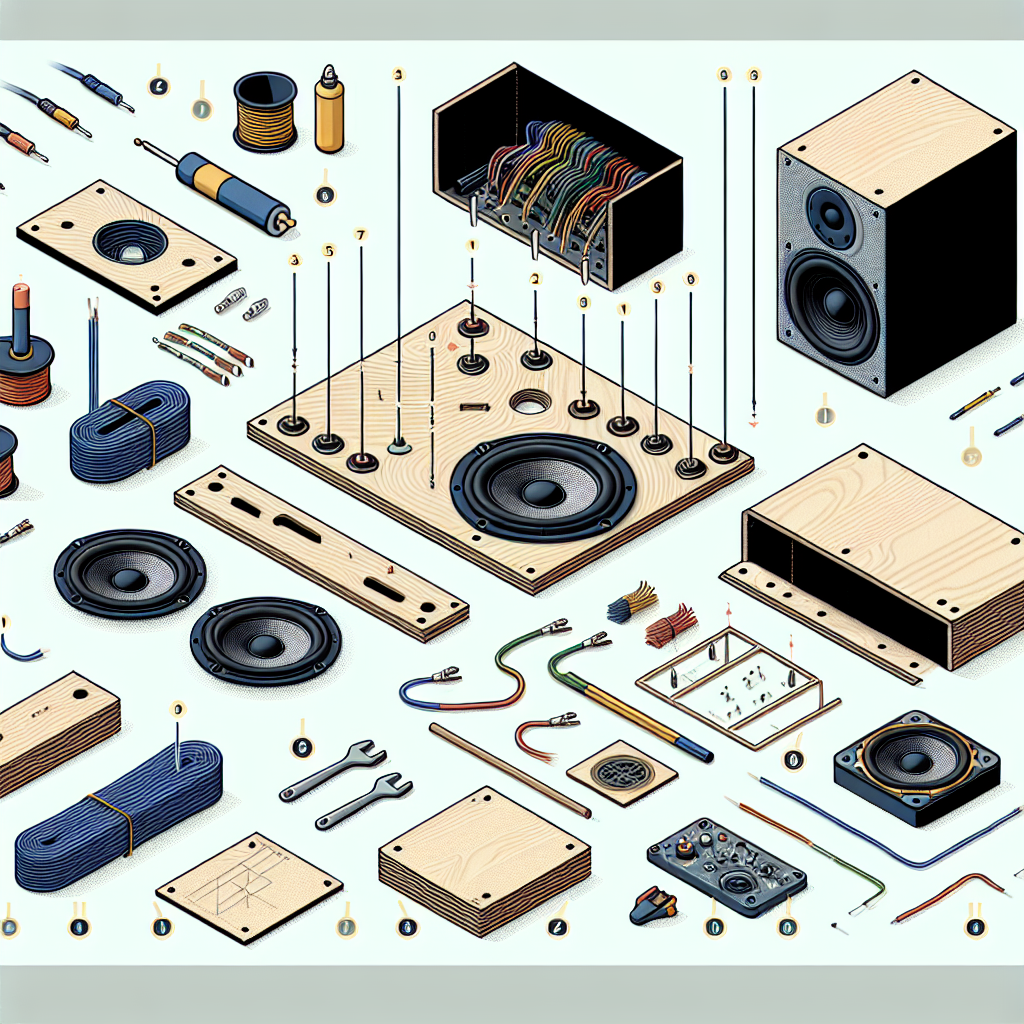
How to make speaker
Introduction to DIY Speakers
In the era of technology, sound is a crucial element in our daily lives, from enjoying music to enhancing movie experiences. However, purchasing high-quality speakers can be expensive. That's why many audiophiles and tech enthusiasts are turning to DIY projects to create their own sound systems. If you're curious about creating your own audio equipment at home, you might be asking yourself how to make speaker systems that not only fit your needs but also perform excellently. In this article, we will guide you through the process of building your own speakers, detailing what materials you'll need, the necessary steps, and helpful tips along the way.
Understanding Speaker Basics
Before diving into the actual process, it's important to understand the **basic components of a speaker** and how they work. Here are some essential parts that make up a typical speaker system:
- Driver: The most vital part of a speaker, responsible for converting electrical energy into sound.
- Crossover: A circuit that directs different sound frequencies to the appropriate drivers.
- Enclosure: The casing that houses the speaker components, which affects sound quality.
- Amplifier: Boosts the audio signal before it reaches the speaker.
Having a basic grasp of these components will help you make informed decisions during the construction process.
Materials Needed for Making Speakers
Now that you're familiar with the basic components, let’s gather the materials you'll need for your speaker project. Whether it's a basic model or something more advanced, having the right tools and materials is essential. Below is a comprehensive list:
- Speaker Drivers
- Wood for Enclosure: MDF (medium-density fiberboard) is commonly recommended.
- Crossover Network
- Wire: For connections between components.
- Speaker Terminals: For connecting to the amplifier.
- Sealing Material: To eliminate air leaks, such as glue or caulk.
- Basic Tools: Drill, saw, soldering iron, tape measure, etc.
Having these materials will prepare you for your journey to creating your own speaker system.
Step-by-Step Guide on How to Make Your Own Speakers
Once you have all your materials gathered, it's time to roll up your sleeves and start the construction. Below is a step-by-step guide to help you navigate the building process.
1. Designing the Enclosure
The enclosure is vital for sound quality, so design it carefully. You can choose a sealed or ported design. Here’s how to get started:
- Sketch your design on paper, considering the dimensions based on your speaker drivers.
- Your enclosure should be sturdy and well-sealed. Use MDF or plywood for this purpose.
- Cut the wood pieces to the appropriate size, ensuring they will fit together well.
2. Assembling the Enclosure
Once you have made the cuts, it’s time to assemble the pieces.
- Start by attaching the sides, front, and back together using screws and glue.
- Be meticulous to ensure there are no gaps that can leak air, as this negatively impacts performance.
- Clamp the enclosure and let the glue dry completely before moving on.
3. Installing the Drivers and Crossover
After your enclosure is ready and dried, you can install the speaker drivers and crossover network.
- Drill holes in the front panel for your speaker drivers as per their specifications.
- Carefully place the drivers in the holes and secure them using screws.
- Wire the drivers to the crossover network according to the circuit diagram you chose.
4. Connecting the Crossover and Terminals
Next, you’ll need to connect the crossover and speaker terminals.
- Solder wires from the crossover network to the terminals positioned on the enclosure's back.
- Check connections ensuring positive and negative terminals are correctly wired.
5. Finishing Touches
Before sealing everything up, it's important to ensure your speaker system is in top shape.
- Use a sealing material around the edges of the enclosure to prevent air leaks.
- If desired, you can paint or finish the exterior of the speaker for aesthetics.
- Let everything dry before performing any tests.
Testing Your Speaker
Once you've finished assembling your speaker system, it’s time for the exciting part: testing it! Here’s how to efficiently evaluate its performance:
- Connect your speakers to an amplifier using the terminals you installed.
- Select different types of music that cover a wide frequency range to test clarity.
- Listen for any distortion or imbalance in sound and make necessary adjustments.
Final Thoughts on Creating Your Own Speakers
Learning how to make speaker systems is a rewarding experience. Not only do you gain hands-on skills, but you also get to enjoy a sound system tailored to your preferences. Remember that every component you choose will significantly affect the final outcome, so be thoughtful in your selections.
Tips for Enhancing Sound Quality
To improve the audio output further, consider the following provisions:
- Placement: Position your speakers optimally in your listening space.
- Use Quality Components: Invest in good-quality drivers and crossovers.
- Room Acoustics: Be aware of how the room’s acoustics affect sound. Position furnishings wisely to minimize reflection and absorb frequencies.
Building your own speakers is not just about saving money; it's about learning, enjoying music, and having an emotional connection with your sound equipment. It’s a journey of creativity and technology that can lead to fantastic audio experiences.
Further Resources for DIY Speaker Projects
For those looking to delve deeper into the world of DIY audio, many resources are available online, including forums, YouTube channels, and community groups. Here are some recommended resources:
- Online Forums: Websites like DIYAudio allow hobbyists to share experiences and advice.
- Video Tutorials: YouTube features numerous channels dedicated to audio and DIY speaker building.
- Books: Titles such as "The Art of Sound" can provide in-depth knowledge on speaker design.
With this guide, you should feel equipped and inspired to embark on your speaker-building journey. Embrace the learning curve and prepare to impress yourself with your audio achievements!
By Guest, Published on October 14th, 2024